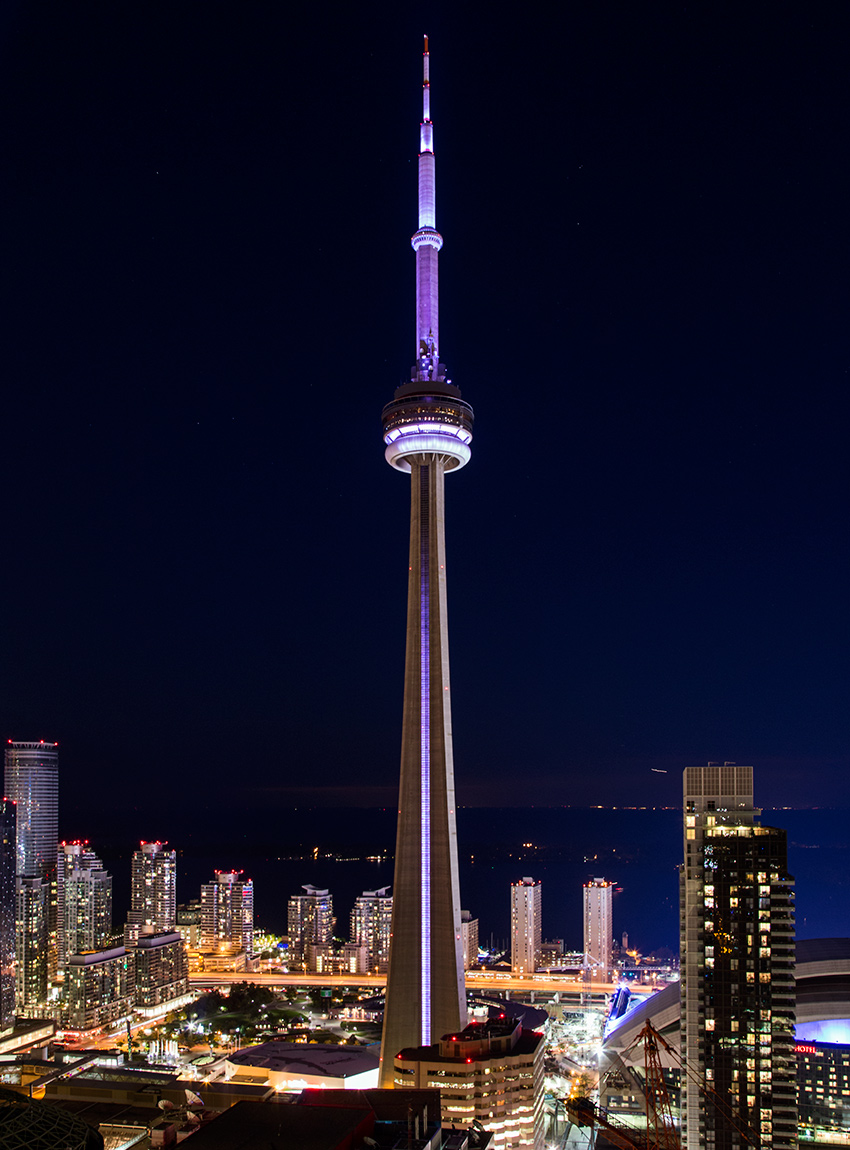
While this was deemed a good and acceptable design, it would have resulted in an antenna core which could twist and bend more easily than a rigid steel structure. In October 1973 (although stated as June 1973 by account of a March 22nd 1975 Toronto Star article), Wayne Baigent (CANRON’s engineering manager) chose to construct and hoist up a lattice (tubular design) antenna frame via a jib crane, piece by piece. Three antenna designs were made and each rejected. When CANRON was given the contract to raise the steel in 1971, its engineers planned to build the antenna right inside the tower and jack it up through the top at the tower's concrete shaft at the 1500ft level. One of the most fundamentally important yet unknown stories related to the CN Tower’s construction was that of a young 23 year old University of Wateloo Co-Op student (Jerry Morrow) who solved one of the greatest engineering debacles of the tower’s antenna installation….ĭuring 17 hours of initial interviews, CANRON came to recount the evolution of the CN Tower's antenna design and erection. These names can be partially seen in the right-most two images of this collage. It was estimated that 7000 people, including bus loads of school children, got the honour of putting their name on one of the highest human-made objects on this planet. It would be ratcheted up the antenna, by hand cranks, as the bolting gang completed their bolting & torquing work on each can segment.Īs a gesture of goodwill and a small marketing stunt, CANRON trucked the topmost 32 foot segment of the antenna down to the (new) Harbourfront area on March 20th 1975 (on display until March 27th) where Torontonians were allowed to sign their name on the segment.

The antenna segments were made from “Stelcoly 50”, a high strength, low alloy, fine grained steel manufactured by Stelco in Canada.ĬANRON’s Jerry Morrow designed the “working platform”, as shown in the lower middle image, which was placed around the antenna to act as protection and a staging area for CANRON’s iron worker bolting gangs. The segments were pre-painted white (except at the junctions, which as their unpainted zinc coating until painter Tony Tracey came back later to paint those sections white, up on the tower). in Etobicoke, as shown in the lower left image where the can segments were being pre-assembled. The antenna was fabricated at CANRON’s facility on Disco Rd. “Spiders” were placed inside the can segments to keep the antenna taut and from twisting. They varied in diameter from 12 feet at the base of the antenna to a slim 2 feet at the top, with the metal’s thickness varying from 1.5” to 0.5”. Ultimately, as the story unfolds, a Sikorsky S-64E helicopter was leased to haul up the antenna in 39 sections, each weighing no more than 8 tons each. A somewhat poor copy of the film can be seen online at the YouTube link: Chris died on May 13th 2003 at age 80 (it had been said he became a church minister in his latter years). The CN Tower faced many engineering roadblocks but one of the most difficult to solve was “How are we going to get a 300 ton, 335 foot steel antenna to the top of small concrete mound at the 1500ft level?”.Īn excellent historical record of this work was documented in a 16mm film made by Chris Slagter (CSC), commissioned entirely by CANRON and without any financial support from the Foundation Co. It would require a 335ft steel-plate bolted antenna of 300 tons to be erected at the 1500ft level.


The construction and installation of the antenna was an engineering feat never attempted before.
#Cn tower photos install
of Canada to fabricate and install the CN Tower’s antenna as well as the steel work for the restaurant pod and upper, interior stair cases. (Etobicoke, ON) received multiple contracts from the Foundation Co. Building the CN Tower’s Antenna Components – 1971 through 1975


 0 kommentar(er)
0 kommentar(er)
